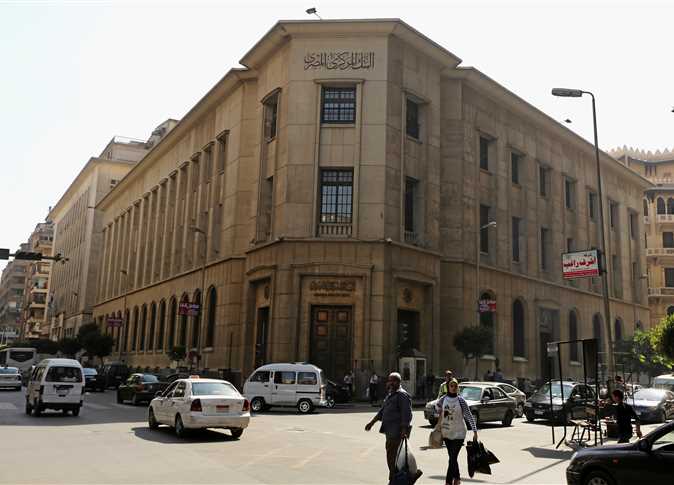When trying to predict what the coming year has in store in the context of an increasingly intertwined global economy, it is vital to factor in all variables of change, venturing beyond the parameters of local and even regional markets.
The US subprime mortgage crisis, as a case in point, created a tornado-like domino effect of economic crises worldwide.
Most recently and closer to home, the Euro zone slump has taken a toll on Egypt’s foreign reserves, resulting in a drop in tourism and exports from some of the markets on which the country heavily relies. The same slump has also contributed to a fall in global trade and Suez Canal receipts.
While this linkage is more direct, there are more subtle connections that impact regional economies, including, for example, recent droughts in Russia and the US, which have pushed up the global price of grains, a trend likely to coincide with higher inflation as local food prices increase.
On the flipside, recovery in the US and Euro zone would serve to boost Egypt’s ailing economy through increased foreign direct investment, trade and tourism, all of which could replenish the country’s diminished foreign reserves. In the broader spectrum, the Bank of Japan’s purchase of Euro bonds is set to aid the Euro recovery, as will a jump in the US supply of oil production.
Taking all these factors into consideration and tying them together, three global finance houses recently released their outlook on 2013 in an attempt to foresee potential trends and possible setbacks.
Deutsche Bank, Goldman Sachs and Morgan Stanley made an assortment of predictions — some seem reasonable, while other extrapolations verge uncomfortably close to the edge of reason.
1. Global growth
Growth will be weak in early 2013 with increased fiscal restraint in the economies of the US and Europe. Euro risks, particularly those of Spain and Italy, should ease in the second half of the year as the output gap between potential and actual GDP tightens, reported Goldman Sachs.
The scenario may also apply to countries of the “Arab Spring” as they gather some of the steam that was lost over the past two years.
The global price of energy is expected to gradually drop as supply increases, while demand is subdued. The loosening of energy supplies will push growth in the second half of 2013.
2. Interest rates
Interest rates should remain low in the world’s largest markets as they press on to spur economic growth. The Federal Reserve will proceed with its quantitative easing program (QE3), by purchasing bonds as it takes assets from banks to supply them with cash.
The European Central Bank, which held its main interest rate at 0.75 percent, will conduct similar private asset purchases. The Bank has said it was ready to buy bonds of debt-strained governments, such as Spain and Italy, once they had signed on to a European bailout program.
While the Bank of England’s monetary policy committee voted against pumping further funds into the economy, putting the brakes on its 375 billion British pounds of QE stock, it maintained interest rates at a record low of 0.5 percent as the country’s economy lingers in weak growth, halving its forecast in 2013 to just 1 percent.
3. The Euro area
While the divergence in growth between the Euro area core — notably Germany — and the periphery — notably Spain — is set to continue, further policy progress should enable growth throughout the zone with incremental gains in Euro area assets, reports Goldman.
Although Spanish economic risks and Italian political risks intensified this year, the absence of fresh stresses should amount to a reasonable rate of growth in both countries. Both were able to complete their 2012 debt funding requirements through successful auctions in the ECB’s bond-buying scheme.
4. Emerging markets
Emerging markets will see growth accelerate in 2013, but less so than developed markets.
The upside potential to growth may be limited by overheating of the economy, causing inflationary pressures to limit expansion. Higher prices may cause a shift towards monetary policy tightening and dampening economic growth, Goldman reported.
“Inflationary pressure and a potential shift towards tightening could come earlier than the market expects in places,” it said.
Responses to inflation and current account imbalances will likely differ among emerging markets in 2013; while some may underestimate the price hikes, others may overestimate the scope for easing.
Morgan Stanley anticipates that emerging markets’ dependence for growth on exports and foreign investment may falter if the developed world continues to suffer, stressing the need for “structural reforms to ensure sustainable growth for years to come.”
5. Commodity constraints
US energy supply will gradually loosen global oil constraint, says Goldman Sachs, and markets are expected to return to a more stable position.
“The ability to bring in new supply into US$80-90 [per barrel] range is rapidly increasing. The relaxation of the energy supply constraint globally reduces one major obstacle to global recovery as we look to above-trend global growth into 2014 and beyond,” the report adds.
6. Bank of Japan
Currently up for heated debate is whether the Bank of Japan will make a more convincing shift toward easing. The bank stepped up its monetary easing program from 91 trillion yen to 101 trillion yen by buying more Treasury discount bills and Japanese government bonds. The Central Bank has kept its policy rate at virtually zero since 2008, while adopting the asset-buying program in 2010, which currently stands at 27 percent of GDP, the largest among developed countries.
In conjunction with its dovish outlook, the BoJ will buy euro bonds in an attempt to devalue the yen against the euro until it “effectively becomes a lender of last resort for the euro area,” said Morgan Stanley in its report.
7. China powerhouse
Chinese growth will be stable next year at a rate of just above 8 percent, according to Goldman Sachs, allaying concern spurred after the country released reports that indicated slowing growth.
While Goldman does not see much of a rebound from China, the Organization for Economic Cooperation and Development disagrees, expecting China’s economy to accelerate briskly over the next two years.
Morgan Stanley, however, says heavy restrictions on lending may trigger a liquidity trap and credit defaults crippling China, and in turn, global economic recovery.
8. Climate change and inflation
Deutsche Bank foresees accelerated effects of climate change possibly impacting financial markets and currencies directly. If the droughts in the US, Russia and Brazil continues into next year, the effect on global food prices will be severe.
One of the consequences may be pressure on central banks to tighten policies. “Natural disasters such as typhoons and hurricanes can have significant negative impacts on GDP and may weigh on economic recovery.”
Inflation can be a direct result of drought, Morgan Stanley says, but can also result from stronger-than-expected recoveries from the world’s economic powerhouses China and the US, as well as central bank balance sheets.
9. Bank deposits
If more central banks were to follow those of Denmark and Switzerland, Deutsche Bank remarks, financial investments would skyrocket as banks adopt negative deposit rates, while at the same time avoiding excessive currency appreciation.
“With China widely seen as cheap, and [euro] periphery risks dissipating, 2013 could be another year where every major equity market is up, aided and abetted by negative rates,” the bank says.
10. Over the cliff?
Chief US Economist Vincent Reinhart predicts the fiscal cliff deal to get pushed into 2013, but an ultimate compromise will reinvigorate confidence, says Morgan Stanley.
The debt ceiling resolution in July 2011 pushed the S&P 500 upwards, while boosting business investments and job market improvements. As mortgage rates remain low and lending conditions loosen, Goldman anticipates US housing activity to continue increasing.
“US domestic banks could benefit further from a gradual normalization of housing credit finance if home prices continue to drift higher,” it says.




